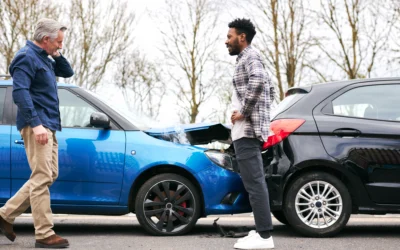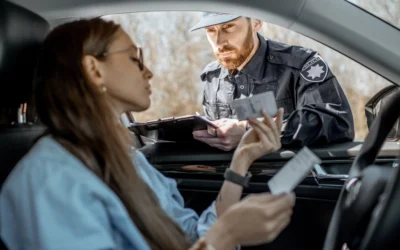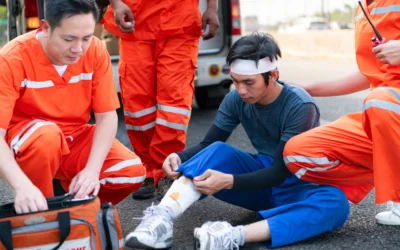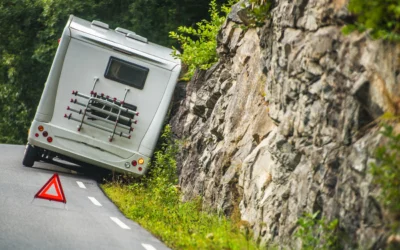You’re scrolling through your phone after a night out in Las Vegas, ready to request an Uber or Lyft to take you back to your hotel. It’s simple, convenient, and typically safer than driving yourself—but what happens if that rideshare vehicle gets into an accident? Who is responsible? How is fault determined? And most importantly, how do you ensure you’re protected if the worst happens?
Rideshare services have transformed transportation in Nevada, with thousands of rides happening daily across Las Vegas, Reno, and other cities. While these services offer convenience, they’ve also created a complex web of liability issues when accidents occur. Understanding who’s responsible after a rideshare accident is critical for anyone involved—whether you’re a passenger, another driver, or even a rideshare driver yourself.
Understanding Rideshare Companies in Nevada
In Nevada, companies like Uber and Lyft are legally classified as Transportation Network Companies (TNCs) under Nevada Revised Statutes (NRS) Chapter 706A. This classification sets them apart from traditional taxi services and comes with specific regulations regarding driver requirements, insurance coverage, and liability.
TNCs are defined in Nevada law as entities that use digital networks or software applications to connect passengers with drivers who provide transportation services. Unlike taxi companies, rideshare drivers typically use their personal vehicles and work as independent contractors rather than employees.
This independent contractor relationship is crucial to understanding liability in rideshare accidents. It creates a situation where determining responsibility isn’t always straightforward—the company, the driver, or other parties might bear fault depending on the specific circumstances of the accident.
The Three Periods of Rideshare Activity
One of the most important factors in determining liability in rideshare accidents is understanding the “period” in which the accident occurred. Nevada law recognizes three distinct periods of rideshare activity, each with different insurance requirements:
Period 1: App Off – Personal Use
When a rideshare driver is not logged into the rideshare app, they are considered to be using their vehicle for personal purposes. During this time:
- The rideshare company bears no responsibility for accidents
- The driver’s personal auto insurance is the only applicable coverage
- Minimum coverage under Nevada law is $25,000 per person for bodily injury, $50,000 per accident, and $20,000 for property damage (known as 25/50/20 coverage)
Period 2: App On, Waiting for Ride Request
When the driver is logged into the app but hasn’t yet accepted a ride request:
- The driver’s personal insurance is the primary coverage
- The rideshare company provides contingent liability insurance if the driver’s personal insurance doesn’t apply
- This contingent coverage typically includes up to $50,000 per person for bodily injury, $100,000 per accident, and $25,000 for property damage
- This is sometimes called “gap coverage” since it fills the gap between personal insurance and the higher commercial coverage
Period 3: After Accepting a Ride (En Route or Transporting)
Once a driver accepts a ride request, whether driving to pick up the passenger or actively transporting them:
- The rideshare company’s commercial liability policy becomes active
- In Nevada, both Uber and Lyft provide up to $1.5 million in coverage for bodily injury, death, and property damage
- This coverage applies until the passenger is dropped off and the ride ends in the app
Understanding these periods is crucial because they directly impact who may be held liable and what insurance coverage applies if an accident occurs.
Nevada’s At-Fault Insurance System and Comparative Negligence
Nevada operates under an “at-fault” insurance system, meaning the party responsible for causing an accident is liable for the resulting damages. However, determining fault isn’t always black and white, especially in complex rideshare accident scenarios.
Nevada follows a “modified comparative negligence” standard under NRS 41.141. This means:
- A person can recover damages as long as they are not more than 50% responsible for the accident
- Recovery is reduced by the percentage of fault attributed to the injured party
- If you’re found to be 51% or more at fault, you cannot recover any damages
For example, if you’re a passenger injured in a rideshare accident where your driver was 70% at fault and another vehicle was 30% at fault, you could potentially recover from both parties according to their percentage of responsibility. However, if you were partially responsible (perhaps by distracting the driver), your recovery would be reduced accordingly.
Multiple Potentially Liable Parties
Rideshare accidents often involve multiple potentially liable parties:
- The Rideshare Driver: May be liable if their negligent driving caused the accident.
- The Rideshare Company: Liability depends on the period of activity but may include:
- Negligent hiring or retention of drivers
- Failure to enforce safety policies
- App design issues that contribute to distracted driving
- Other Drivers: Third-party drivers who contribute to causing an accident.
- Vehicle Manufacturers: If a vehicle defect contributed to the accident.
- Government Entities: If poor road conditions or inadequate signage were factors.
Common Rideshare Accident Scenarios
Scenario 1: You’re a Passenger in a Rideshare Vehicle
If you’re injured as a passenger in an Uber or Lyft, your case is typically straightforward since you bear no responsibility for driving. You may be able to recover from:
- The rideshare company’s $1.5 million commercial policy if your driver was at fault
- The insurance of another driver if they caused the accident
- Both policies if fault is shared
Scenario 2: You’re Hit by a Rideshare Driver
If you’re in another vehicle, a pedestrian, or a cyclist hit by a rideshare driver, liability depends on:
- Whether the rideshare driver was at fault
- Which period the driver was in when the accident occurred
- Your own potential contribution to the accident
Scenario 3: You’re a Rideshare Driver
If you’re driving for Uber or Lyft and are involved in an accident:
- Your personal insurance may deny coverage if you didn’t disclose rideshare activities
- The rideshare company’s insurance applies based on which period you were in
- You may need special “rideshare insurance” or “gap coverage” for complete protection
Evidence Needed to Establish Liability
Gathering proper evidence is crucial in rideshare accident cases:
- Rideshare App Data: Documentation of the driver’s status (online/offline, period of activity)
- Accident Reports: Police reports establishing the basic facts and initial fault assessment
- Witness Statements: Accounts from passengers, other drivers, or bystanders
- Video and Photographic Evidence: Dashcam footage, traffic cameras, or smartphone photos/videos
- Electronic Records: GPS data, driver logs, and communication between driver and company
- Medical Documentation: Records establishing injuries and their connection to the accident
Seeking Compensation for Rideshare Accident Injuries
If you’re injured in a rideshare accident in Nevada, you may be entitled to recover:
- Medical Expenses: Both current and future medical costs related to your injuries
- Lost Wages: Compensation for time missed from work and reduced earning capacity
- Property Damage: Repair or replacement of your vehicle and personal property
- Pain and Suffering: Non-economic damages for physical pain and emotional distress
- Long-term Care: Costs for ongoing rehabilitation or assistance needs
The amount of compensation available depends on the severity of your injuries, the insurance policies in effect, and how fault is distributed among the parties.
Key Takeaways
- Liability in rideshare accidents depends heavily on which “period” the driver was in at the time of the accident
- Nevada’s modified comparative negligence law allows recovery as long as you’re not more than 50% at fault
- Multiple parties may share liability in rideshare accidents
- Rideshare companies in Nevada must provide up to $1.5 million in coverage when drivers are actively engaged in transportation services
- Preserving evidence specific to rideshare status is crucial for establishing liability
Frequently Asked Questions
Does it matter whether I was in an Uber or Lyft?
No, Nevada law treats all Transportation Network Companies similarly. Both Uber and Lyft carry the required $1.5 million in commercial liability insurance during active transportation periods.
What if the rideshare driver was distracted by the app?
If the driver’s interaction with the rideshare app contributed to the accident, this could potentially create additional liability for both the driver and possibly the rideshare company.
Can I sue the rideshare company directly?
Potentially, but it’s complicated. Since drivers are independent contractors, the company’s direct liability is often limited. However, you can access their insurance policy during active periods, and in some cases, you may have claims against the company for negligent hiring or supervision.
What if the rideshare driver doesn’t have proper insurance?
This is where the rideshare company’s contingent and commercial policies become crucial. Even if the driver’s personal insurance is insufficient or denies coverage, the company’s policies typically provide coverage during active periods.
How long do I have to file a claim after a rideshare accident?
In Nevada, the statute of limitations for personal injury claims is generally two years from the date of the accident. However, it’s advisable to begin the process much sooner while evidence is fresh.
Contact Us
If you’ve been injured in a rideshare accident in Nevada, understanding your rights and the complex web of liability is crucial to receiving fair compensation. At Joey Gilbert & Associates, we have extensive experience navigating rideshare accident claims and helping clients secure the compensation they deserve.
Our experienced attorneys can help investigate your accident, determine all potentially liable parties, and fight to maximize your recovery. Don’t navigate this complex process alone—reach out today for a consultation to discuss your case.
Don’t let the complexities of rideshare liability prevent you from getting the compensation you deserve. Contact our team of dedicated personal injury attorneys who are ready to advocate for your rights and help you through every step of the claims process.




